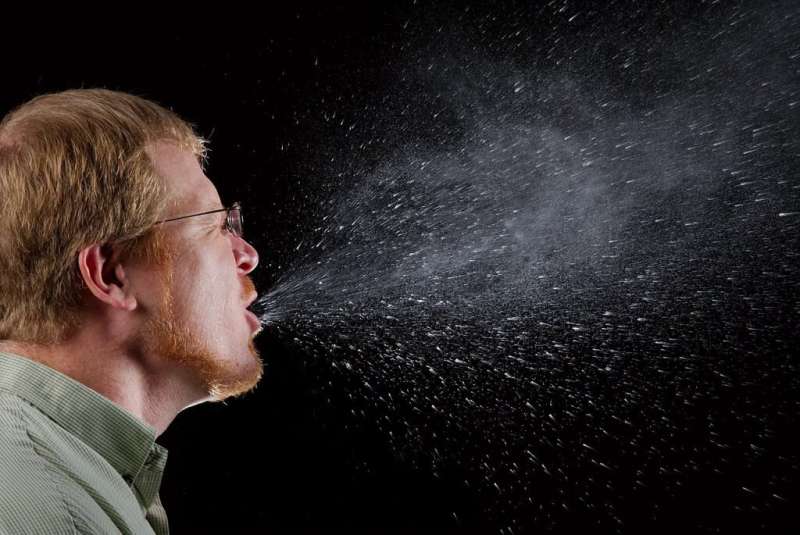Modeling airborne disease diffusion

With outbreaks of airborne diseases such as measles occurring with growing frequency, modeling how the diffusion process works in dynamic contact networks is an increasingly important research area for epidemiology. A team including Macquarie University researchers Mohammad Shahzamal, Raja Jurdak, and Bernard Mans has developed a computational diffusion model that overcomes previous limitations in capturing an accurate view of the possible spread of infection. The research has been published in Royal Society Open Science.
Most diffusion models assume both infected and susceptible individuals are present in the same physical space and time for an inter-node transmission, or individual-level transmission, to occur. However, when a person who is either incubating or showing active symptoms of an airborne disease releases infectious particles, (through sneezing or coughing for example), these can linger in the air for some time, continuing to infect others even after that person has left the area.
Current diffusion models cannot capture transmissions that occur through indirect interactions. As a result, the epidemiological models available until now have not factored in transmissions by this indirect interaction, reducing both their accuracy and effectiveness.
The researchers developed a computational diffusion model—same place different time transmission (SPDT)-based diffusion—that considers transmission links for these indirect interactions.
This model changes the network dynamics where the connectivity among individuals varies as the link—such as an airborne illness—becomes less concentrated in the area. To work this out, the researchers modeled SPDT diffusion behaviors by using data-driven contact networks to simulate airborne disease spreading. The SPDT model significantly increases diffusion dynamics with a high rate of disease transmission. Because they make the underlying connectivity denser and stronger by including indirect transmissions, SPDT models are more realistic than same place same time (SPST) models for studying various airborne diseases outbreaks.
The researchers also found that the diffusion dynamics, including indirect links, were not reproducible by the current SPST models based on direct links, even if both SPDT and SPST networks assume the same underlying connectivity. This is because the transmission dynamics of indirect links are different from those of direct links. These outcomes highlight the importance of the indirect links for predicting outbreaks of airborne diseases.
The model can also be applied to such diverse fields as cybersecurity, ecology and marketing—wherever inter-node transmissions can occur via indirect interactions, whether by infectious particles in physical space or information in virtual space. For example, a newly joined member can still see information posted by an existing member of a social media platform, even though the new member was not present when the information was posted. Queen message dissemination in social ant colonies and pollen dissemination in the environment also follow a similar mechanism. In these scenarios, current diffusion models can miss significant transmission events during delayed indirect interactions.
More information: Md Shahzamal et al. Indirect interactions influence contact network structure and diffusion dynamics, Royal Society Open Science (2019). DOI: 10.1098/rsos.190845
Journal information: Royal Society Open Science
Provided by Macquarie University




















